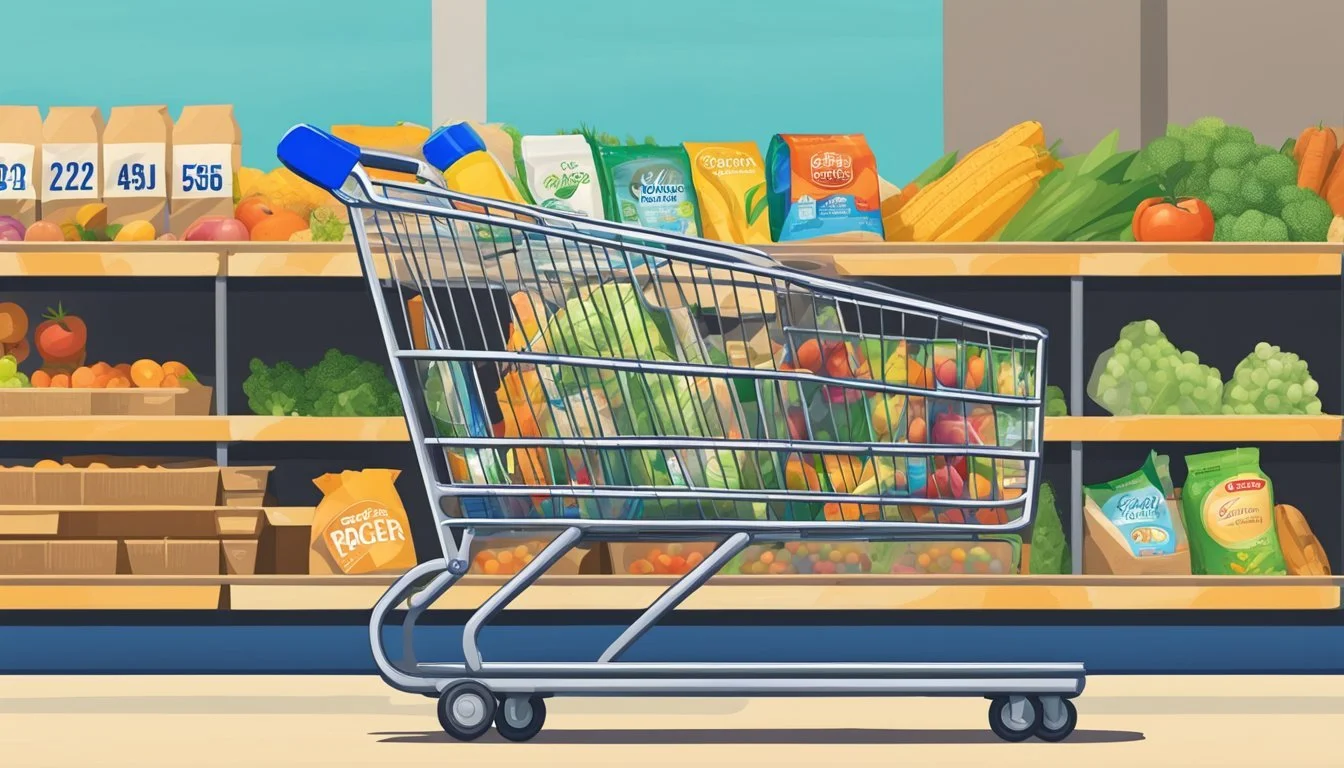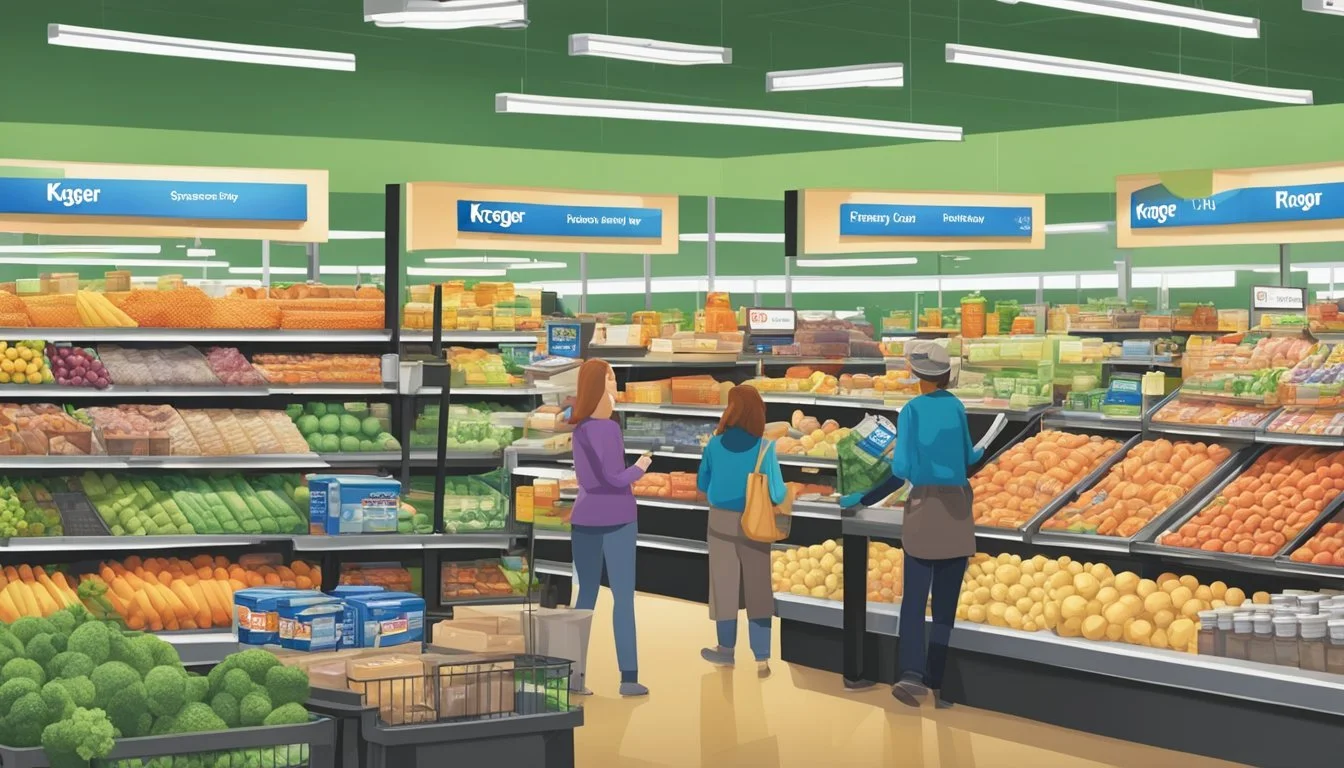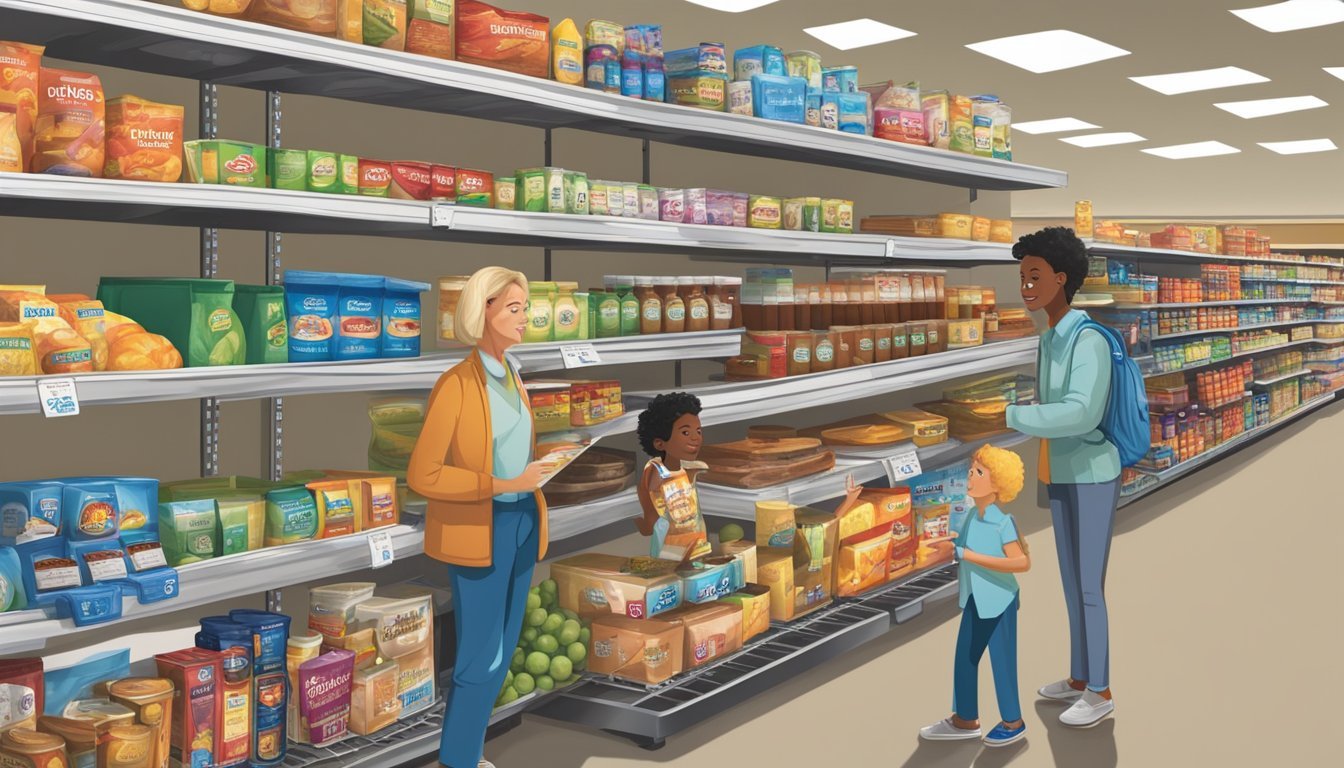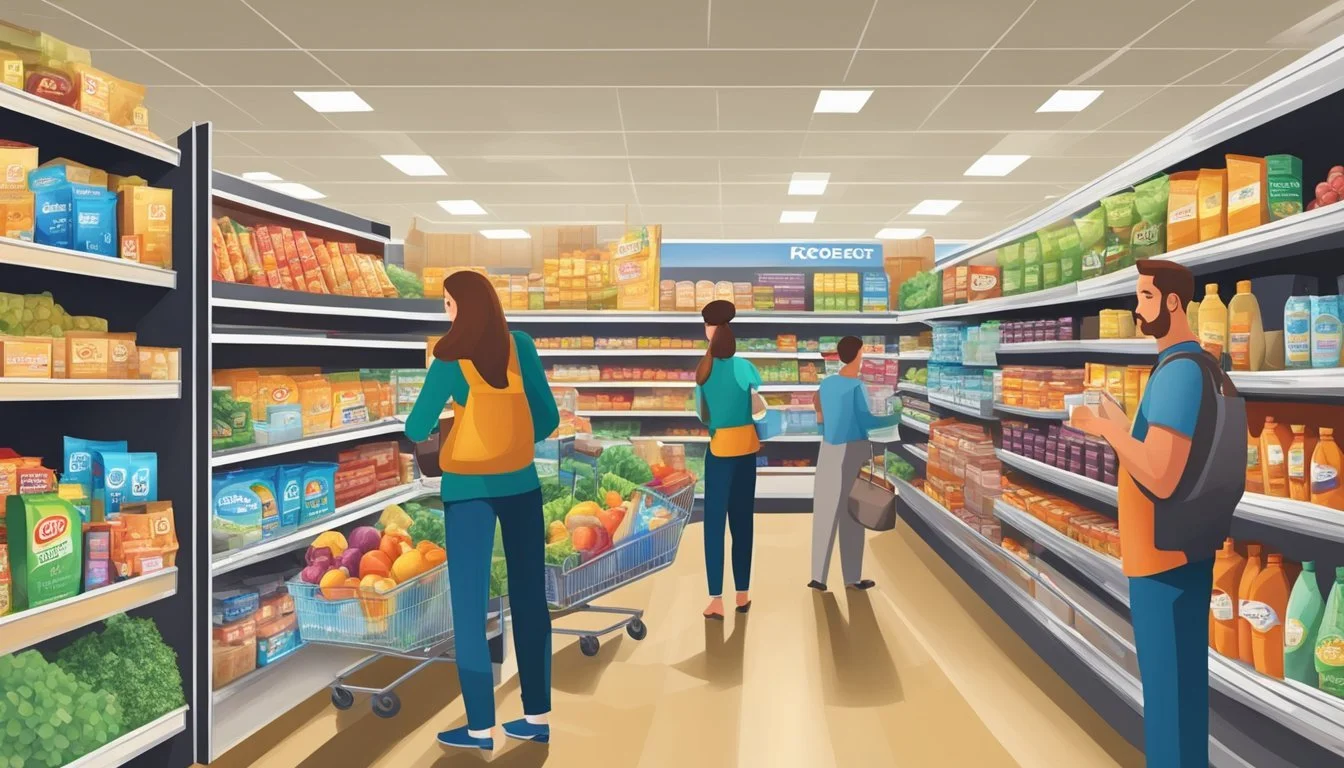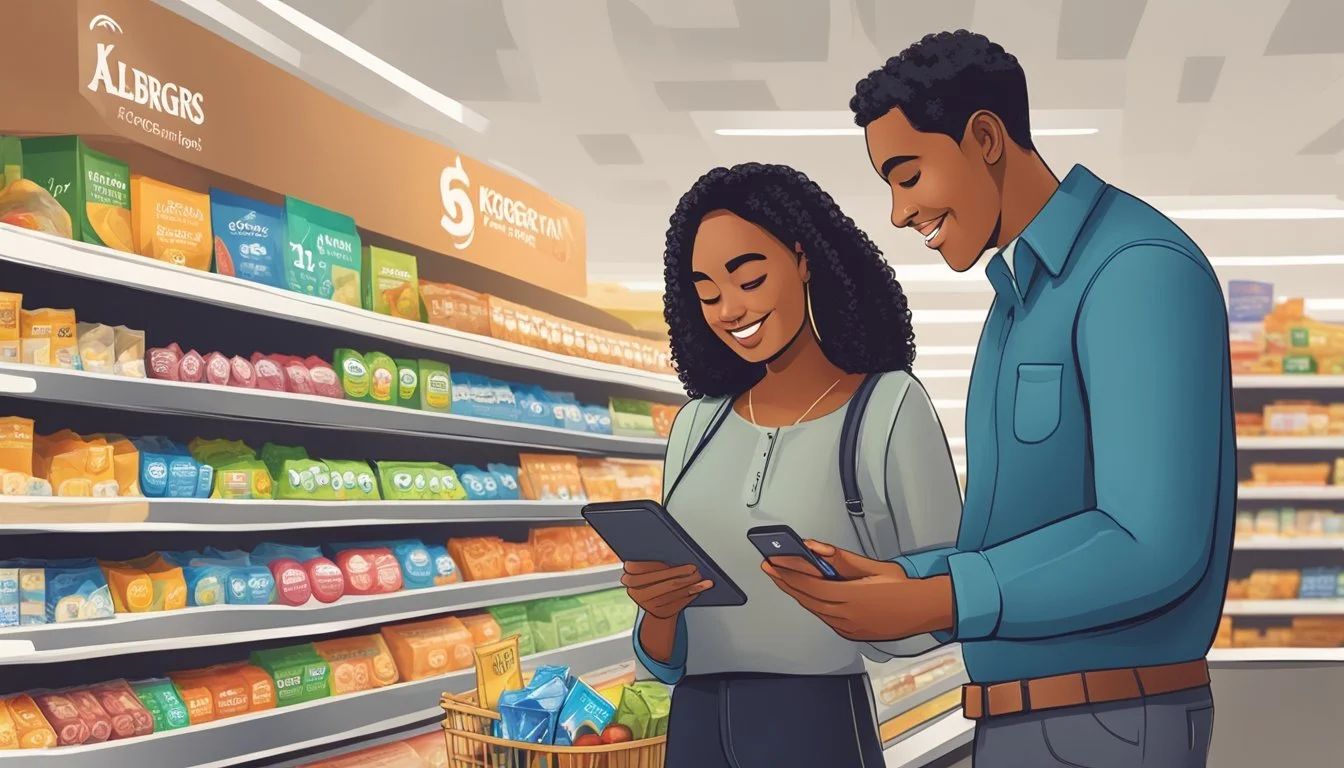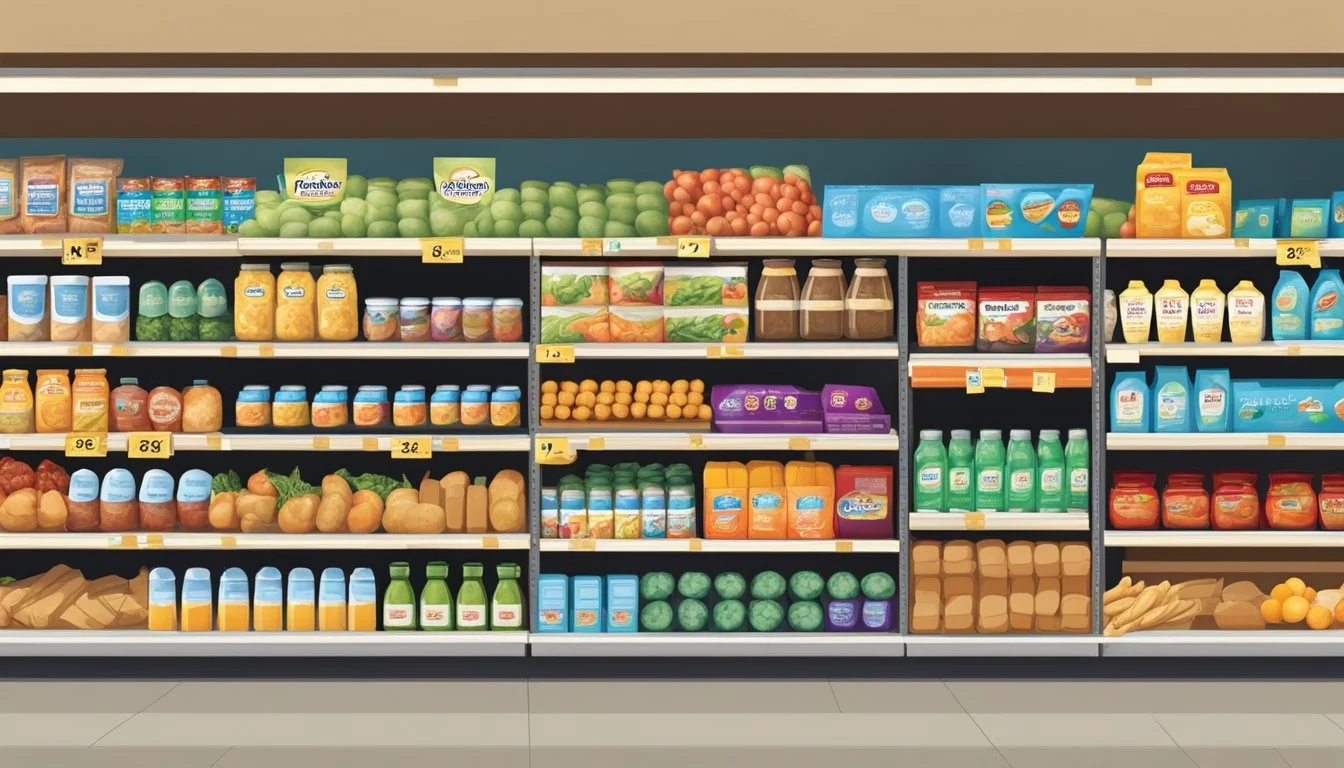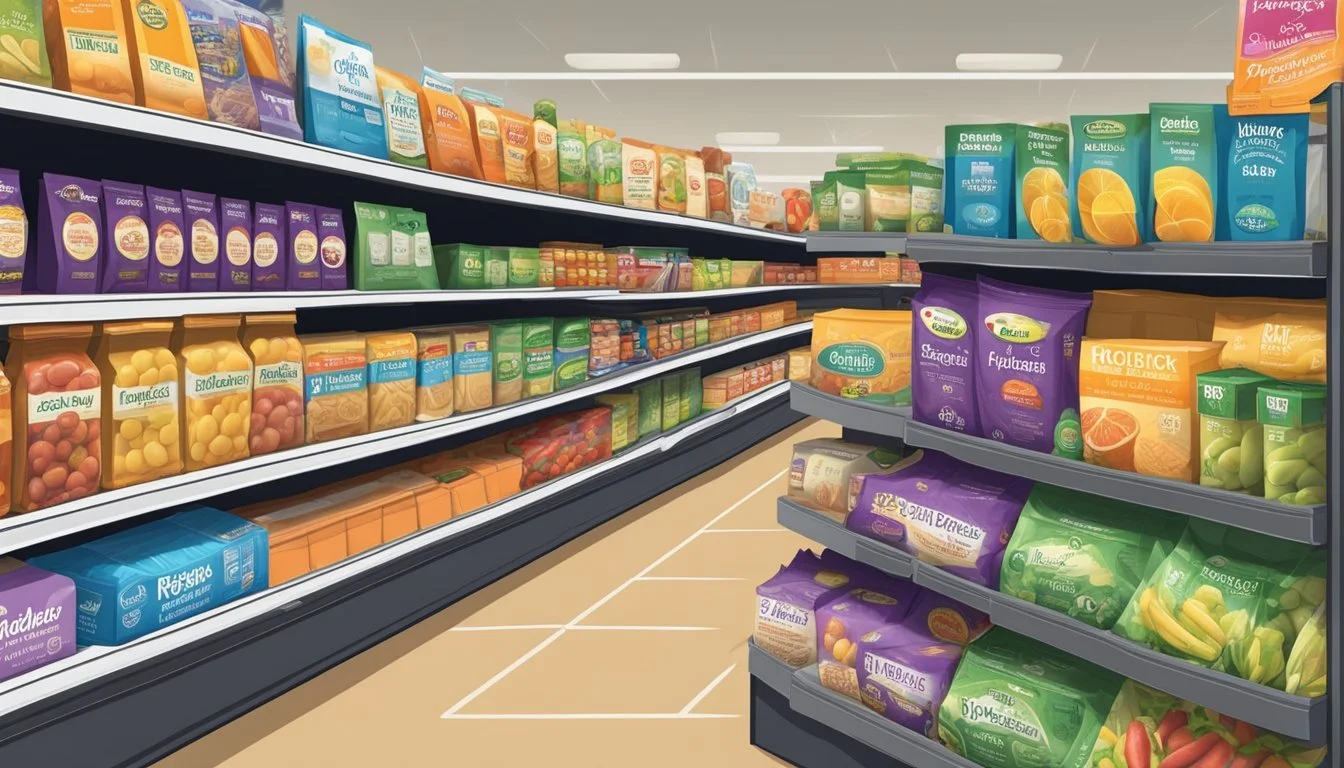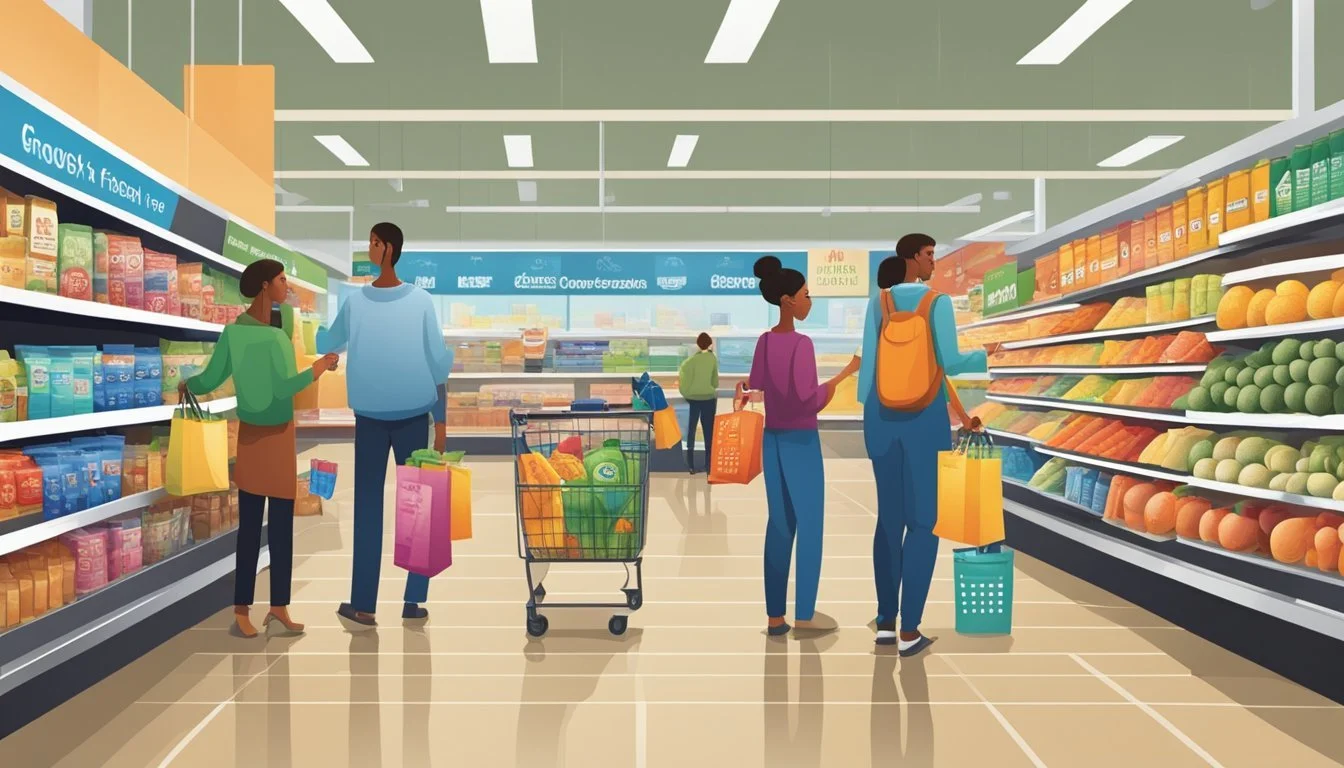Is Kroger Cheaper Than Albertsons?
Comparing Grocery Prices
Part of Our Grocery Store Guide with Details on Kroger Prices and Albertsons Prices
When shopping for groceries, consumers often look to get the most value for their money, which frequently leads them to compare prices across various supermarket chains. Kroger and Albertsons are two of the largest grocery retailers in the United States, with wide networks of stores catering to millions of customers. Price comparisons between the two can highlight where shoppers might find lower prices on their grocery lists.
Evidence suggests that Kroger may often present itself as the more budget-friendly option for a majority of common shopping products. Analysis of available data indicates that Kroger's pricing on certain items can be significantly lower than Albertsons', which could translate to meaningful savings for consumers over time. However, the price differences across various categories can vary, and strategic shoppers might still find deals at Albertsons that could compete with Kroger's prices, especially by taking advantage of sales and promotions.
In their decision-making process, consumers should consider that while one store might have overall lower prices, individual preferences for specific brands, product quality, store location, and shopping experience also play critical roles. For instance, some might be willing to pay slightly more for a particular category of items at Albertsons due to closer proximity or preferred brand availability. Therefore, while generalized data points to Kroger potentially being the cheaper option, individual shopping habits and store-specific factors could influence where the best value is found for each shopper.
Company Backgrounds
In examining the backgrounds of Kroger and Albertsons, it's vital to understand their respective origins, how they developed their business models, and operational strategies. This insight provides context to their market positioning and pricing strategies.
Kroger's History and Business Model
Kroger, founded in 1883 in Cincinnati, Ohio, is one of the largest supermarkets in the United States. The foundation of Kroger's business model has been innovation and customer focus. Kroger operates under various banners, including Ralphs, Harris Teeter, and Fred Meyer, showcasing a diverse range of formats from hypermarkets to superstores.
Kroger emphasizes in-house brands and robust customer loyalty programs. The company's strategy revolves around delivering value through a combination of quality goods at competitive prices and a personalized shopping experience.
Albertsons' Foundation and Operations
Albertsons, established in 1939 in Boise, Idaho, is a leading grocer with a reputation for specialty products and customer service. Albertsons has expanded its operations through various store formats and a focus on integrating the supermarkets into the fabric of the communities they serve.
Albertsons' operations highlight the importance of offering a variety of specialty products to meet customer needs. This approach has led to a network of stores that provide a tailored shopping experience, fostering brand loyalty among its customers.
Price Comparison
This section provides a detailed comparison of the prices at Kroger in contrast to those at Albertsons, with a focus on average product prices and the pricing impact of store brands.
Analyzing Average Product Prices
In the competitive landscape of grocery stores, price is a critical factor for consumers. Kroger appears to routinely offer lower prices than Albertsons. According to gathered data, consumers may find their shopping basket to be approximately 13% cheaper at Kroger. This saving is not insignificant in times of tight household budgets.
Item Category Kroger Price Albertsons Price Dairy Products $20.50 $23.00 Fresh Produce $15.75 $17.50 Packaged Goods $45.68 $53.88
Prices are for illustrative purposes only.
Impact of Store Brands on Pricing
Store brands play a significant role in providing savings for shoppers. Kroger's private label products tend to be more competitively priced compared to similar national brands and even compared to Albertsons' store brands, such as Lucerne and Signature. Consumers mindful of their spending will find Kroger's private label items offering a similar quality for a fraction of the cost.
Brand Type Kroger Average Price Albertsons Average Price Store Brand $2.99 $3.49 National Brand Equivalent $4.29 $4.49
Prices are for illustrative purposes only.
Market Influence and Competition
In the landscape of US grocery retail, the dynamic between market giants Kroger and Albertsons plays a crucial role in shaping the competitive environment. Their potential merger brings into focus not only their individual market standings but also the ever-present competition with the sector's other dominant players.
Market Share and Presence in the US
Kroger and Albertsons are two of the largest traditional grocery chains in the United States, possessing significant market share. Kroger operates approximately 2,800 stores, while Albertsons runs close to 2,300 locations. Their combined presence would result in a massive entity with the potential to impact the competitive balance of the grocery industry.
Market Share Impact:
Grocery Chain Market Share (%) Store Count Kroger X% 2,800 Albertsons Y% 2,300 Walmart Z% N/A Amazon (Including Whole Foods Market) W% N/A
*Market shares (%) are placeholders for illustrative purposes. Actual figures may vary.
Competition with Other Retailers
The competitive landscape is not limited to traditional grocery chains; it also features large discounters and online retailers. Retailers like Walmart have a formidable presence in the grocery sector, often offering lower food prices, which increases the pressure on other chains to compete. Moreover, Amazon's expansion into physical retail through Whole Foods and its e-commerce capabilities adds another layer of competition. Dollar General is another retailer gaining ground, providing cost-effective options for consumers and thereby altering the market. Grocery wholesalers such as C&S Wholesale Grocers and conglomerates like Ahold Delhaize continue to play a foundational role in the industry, supplying a vast network of retail grocery stores across the country.
Competitive Factors:
Competitive Factor Kroger & Albertsons Competitors Pricing Competitive pricing strategies Often have lower prices (e.g., Walmart) Store Locations High concentration in certain regions Wide distribution (e.g., Ahold Delhaize) Online Capabilities Growing online presence Advanced e-commerce (e.g., Amazon) Wholesale Partnerships Partners with various suppliers Owns supply chains (e.g., C&S Wholesale Grocers)
Each competitor, with its unique strategy and market influence, not only contributes to the diversity of shopping options but also creates a challenging environment wherein chains like Kroger and Albertsons must continuously adapt to remain competitive. The proposed merger between these two grocery chains could be a response to this multifaceted competition.
Consumer Experience
When assessing Kroger and Albertsons, a consumer's experience encompasses both product quality and the overall shopping journey, including digital convenience and in-store service.
Quality of Products and Services
Both Kroger and Albertsons prioritize quality and freshness in their product offerings. Consumers at Kroger can find a wide range of in-house brands that promise quality at a lower price point, while Albertsons often highlights their specialty and fresh items. Customers expect to purchase high-quality goods at both retailers, and the stores' commitment to providing fresh options can make a significant difference in the consumer experience.
Shopping Experience and Convenience
The shopping experience and convenience play critical roles in the modern grocery sector. Kroger often implements digital shopping solutions, like their online ordering with pick-up and delivery services, which bolster a personalized shopping experience. Features such as their customer loyalty program cater to personalized experiences by offering tailored discounts and benefits.
Albertsons also strives to offer convenience but puts more emphasis on customer service and in-store shopper assistance. Their layout and focus on customer interactions aim to improve the shopping experience. Both companies understand the importance of meeting customer expectations through efficient service whether customers shop in-store or online.
Financial Aspects
The financial comparison between Kroger and Albertsons uncovers distinct approaches to revenue generation, profit margins, and investment tactics aimed at enhancing cost efficiencies and offering customer savings.
Analysis of Revenues and Profit Margins
Kroger's revenue streams and profit margins exhibit a pattern of solidity, with its large-scale operations enabling competitive gross margins. The company's adjusted operating profit has demonstrated resilience, albeit a modest decrease from $5.0 billion is forecasted, settling in the range of $4.6 to $4.8 billion.
Albertsons, while operating with efficiency, shows a differentiated financial profile with a net leverage ratio that falls short of Kroger's performance. This metric is indicative of Kroger's stronger financial health in terms of debt and profitability. In the context of a merger, these figures suggest a financial consolidation that could potentially drive down overall costs.
Cost Savings and Investment Strategies
Kroger's emphasis on cost savings is apparent in its merger plans with Albertsons, projecting significant cost synergies that might extend benefits to customers. The strategy pledges an investment of $500 million towards reducing product prices, aiming to pass on cost savings directly to consumers.
Both Kroger and Albertsons have expressed a commitment to reinvest capital into their operations, aiming for enhanced efficiency and competitive pricing strategies. The potential merger hints at economic adjustment capabilities, fostering the creation of a grocery entity that is not only vast in size but also ambitious in executing affordable product strategies for cost-conscious shoppers.
The merger's effect on cost distribution and acquisition strategies for both entities could translate into optimized operations, achieving economies of scale that potentially benefit the customer base through lower prices.
Industry Impact
The potential merger between Kroger and Albertsons has significant implications for the grocery industry, stirring discussions about competition and regulatory responses. Concerns about market concentration and the effects on pricing are at the forefront of these discussions.
Effects of Mergers and Acquisitions
Mergers and acquisitions can reshape industry landscapes by consolidating resources and market share. Kroger's acquisition of Albertsons suggests a shift towards a more concentrated market, potentially affecting competition. History suggests that Kroger may utilize this merger to achieve economies of scale, which could lead to lower prices for consumers. However, there is debate over whether these cost savings will be passed on to consumers or will result in increased market dominance that could stifle competition and lead to higher prices over time.
Regulatory Considerations
The role of regulatory bodies, such as the Federal Trade Commission (FTC), is to scrutinize such mergers to prevent antitrust issues and protect consumer interests. The FTC's concerns often center around whether a merger reduces competition to a level that harms consumers and other businesses. The FTC filed a complaint against the Kroger-Albertsons deal, which suggests they fear it could lead to less competition and potentially negative consequences for both consumers and suppliers. Regulators are hence faced with a complex decision: They must weigh the potential benefits of efficiencies against the risks of creating a market that could be less competitive in the long term.
Additional Factors
When comparing Kroger with Albertsons, it is imperative to consider the economic and workforce-related elements that can sway prices. These include the impact of inflation and the wages and benefits provided to associates.
Influence of Inflation on Prices
Inflation, as reported by entities like the Bureau of Labor Statistics, dictates the purchasing power of a dollar and, consequently, affects grocery prices. The continuous rise in the cost of goods and services means retailers may adjust prices to maintain their margins. For example, if inflation rises by 2% annually, a grocery item costing $1.00 would increase to $1.02 the following year to match the inflation rate.
The Role of Associates and Wages
Wages and benefits provided to associates are significant determinants of retail prices. The Bureau of Labor Statistics tracks wage trends which can influence a company's operational costs. Kroger and Albertsons may have different strategies regarding wages and benefits which can impact their pricing. Higher wages could lead to increased prices for consumers, but they can also improve service quality and employee satisfaction. A table comparing average wages and potential effects on prices can illustrate this:
Retailer Avg. Wage Benefits Offered Potential Price Impact Kroger $15/hr Health insurance, retirement plans May translate to slightly higher prices Albertsons $14/hr Health insurance, paid leave Could result in moderately priced items
Both companies must balance competitive wages to attract and retain employees while keeping grocery prices affordable for consumers.
Overall Verdict
When examining the value proposition of Kroger relative to Albertsons, price comparisons are crucial for shoppers. In a direct price comparison for a basket of 34 grocery items, Kroger's total was $81.93, which proved to be less expensive than Albertsons' at $94.38, offering customers more value for their money. This evaluation positions Kroger as a potentially more cost-effective choice for those looking to stretch their grocery budget.
While savings are important, customers also consider the variety and availability of products. Both chains provide a wide selection, yet merging these giants could lead to an expanded footprint, potentially offering shoppers even more choices and variety. Should Kroger maintain or enhance the variety post-merger, this could translate to a successful endeavor for the company.
Kroger’s CEO, Rodney McMullen, advocates for the merger, framing it as a strategic move to compete more vigorously with industry giants such as Walmart and Amazon. His stance suggests that, beyond pricing, the deal could innovate shopping experiences and deliver enhanced value to its customers.
In analyzing the potential impact of the deal, it remains clear based on current data that Kroger offers competitive pricing. The merger with Albertsons may further influence this dynamic, with the possibility of providing shoppers with an amalgamation of value, choice, and an increased market presence.

